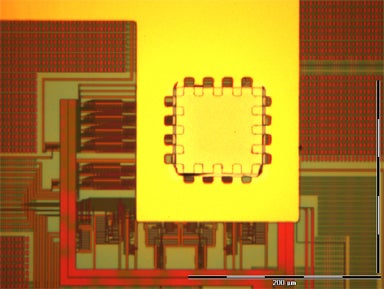CANi: Applications |
||||||||||||
|
|

Examples of the applications of mass transport in solid electrolytes include the following:
It should be noted that researchers at ASU have demonstrated the feasibility of all of the above applications and these demonstrations form the basis of a multitude of publications and patents. Of course, the nature of the electrolyte is critical to the successful utilization of ionic phenomena; we require materials that not only exhibit appropriate characteristics and performance but are also compatible with the system environment. This effectively limits our choice to high ion mobility solid electrolytes based on column VI B elements of the Periodic Table, that is, compounds of the chalcogens (primarily O, S, and Se). Researchers, including those at ASU, have attained considerable knowledge of the functionality of these electrolytes and in particular how their unique nanostructure leads to the necessary characteristics. Specifically, it is the nano phase-separation (on the scale of a few nm) inherent in the chalcogen-based electrolytes that allows the mass redistribution effect to occur rapidly and with very low applied bias and current. This, along with the physical scalability of these nanoionic materials and devices, means that the technique is applicable not only to the microsystems of today but also the ultra-low power nanosystems envisioned in the future. Researchers, including those at ASU, have attained considerable knowledge of the functionality of these electrolytes and in particular how their unique nanostructure leads to the necessary characteristics. Specifically, it is the nano phase-separation (on the scale of a few nm) inherent in the chalcogen-based electrolytes that allows the mass redistribution effect to occur rapidly and with very low applied bias and current. This, along with the physical scalability of these nanoionic materials and devices, means that the technique is applicable not only to the microsystems of today but also the ultra-low power nanosystems envisioned in the future. Researchers, including those at ASU, have attained considerable knowledge of the functionality of these electrolytes and in particular how their unique nanostructure leads to the necessary characteristics. Specifically, it is the nano phase-separation (on the scale of a few nm) inherent in the chalcogen-based electrolytes that allows the mass redistribution effect to occur rapidly and with very low applied bias and current. This, along with the physical scalability of these nanoionic materials and devices, means that the technique is applicable not only to the microsystems of today but also the ultra-low power nanosystems envisioned in the future. Momentum has grown in the field of memory but the versatility of this technology is likely to produce wide scale use beyond electronics and information technology into applications that are only limited by the imaginations of device and system designers. | |||||||||||
|
||||||||||||
